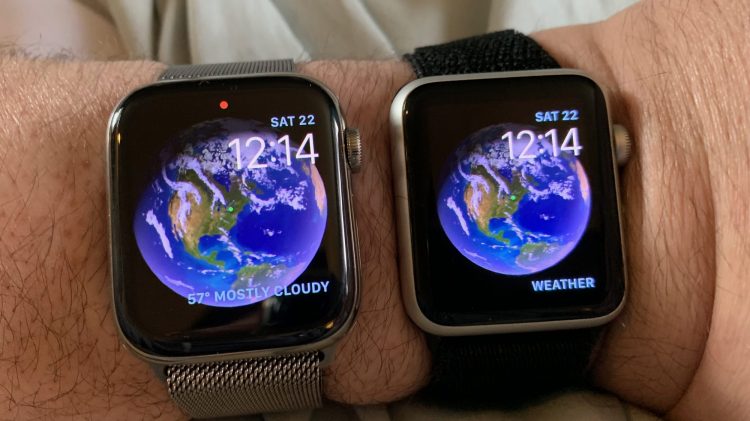Four years ago, when the traditional watch industry was in decline, Apple used the first-generation Apple Watch to test whether people would accept an alternative with “all day” rather than multi-day battery life. If consumers said “no,” Apple would have focused on devices with greater longevity, likely at the expense of performance and/or physical size. But if they said “yes,” Apple could deliver generational performance leaps while sticking to an 18-hour promised run time, sacrificing the Watch’s ability to be used overnight.
The correct answer wasn’t obvious at the time, and even today doesn’t feel completely settled. Accepting daily Apple Watch charging means taking it off every night — something that’s not required for other watches — and making sure you always have a charger nearby when you sleep and travel. Though this required a lifestyle change for users, Apple brushed it off as easy: Just charge your Watch every time you charge your iPhone.
Within months, Apple determined that its users were OK with nightly charging, and the rest is history: Sluggish “Series 0” Apple Watches were quickly forgotten as Series 1 and 2 sequels debuted with processors that were twice as fast, followed by similar Series 3 and 4 models. Each year, Apple eked out but didn’t advertise small generational battery life gains, such that some users can wear their Watches for two days if they abstain from wrist phone calls, workout tracking, and other power-intensive features.
Sleep tracking suffered as a consequence. Rival devices use continuous, overnight access to motion data to monitor the quality and quantity of your sleep, something that Apple Watches can’t do without midday recharging — a step that even Apple appeared to realize was too much to ask from users. Consequently, Apple left the Watch sleep tracking market to third-party apps such as Sleep++, though it openly acquired the sleep tracking company Beddit to develop its own alternative.
June 5th: The AI Audit in NYC
Join us next week in NYC to engage with top executive leaders, delving into strategies for auditing AI models to ensure fairness, optimal performance, and ethical compliance across diverse organizations. Secure your attendance for this exclusive invite-only event.
Based on a pre-event leak from 9to5Mac, Apple appears to be on the threshold of adding sleep tracking capabilities to watchOS 6, and it sounds like the approach won’t be user-friendly: The company will apparently tell users to recharge their devices mid-day or keep a pair of Apple Watches, one for day and one for night. In other words, if you have a problem with mid-day Watch charging, get over it.
If Apple actually verbalizes this, I hope Apple Watch users (and masses of prospective customers) respond with deserved enmity. There are now dozens of wearables with multi-day battery life thanks to Huawei, Qualcomm, and Samsung chips, all offering proper sleep tracking; after four years, Apple should have properly solved this problem. No one would accept a “just buy two phones” solution, and they shouldn’t accept it for watches, either.
The idea of having to carry your watch charger to work or buy a second one to keep at the office is almost as ridiculous, not that Apple would hesitate to suggest or make money off it. As much as I like my Apple Watch Series 4, the last thing I need is a midday prompt to take it off so I’m able to sleep with it. There’s a point at which the things you own feel like they own you, and having to refuel a watch during the day officially crosses that line.
I hope that what has leaked is only half of the story. It’s possible that a Sleep app wasn’t revealed with watchOS 6 back in June because the feature is debuting alongside a new Apple Watch that has true multi-day battery life. That way, Apple might offer the app with daily charging compromises to users with older Watches, while giving users who really want the feature a reason to upgrade.
This would make sense from a hardware standpoint, as continued improvements in chip fabrication technology could have enabled Apple to shrink its S4 processor to a smaller chip size, making more room for a bigger battery, or keep the same chip size while adding a low-power processor for overnight tracking. Switching to stronger materials such as titanium and ceramic might — underscore might — enable the development of a thinner chassis with more internal space without compromising durability. But this might all be wishful thinking.
I don’t believe that Apple wants sleep tracking to become a waking nightmare for its users. But I wouldn’t put it past the company to solve the problem by asking people to throw more money at it in one way or another. I’m anxious to see how it handles this particular situation at the “by innovation only” event next week.

